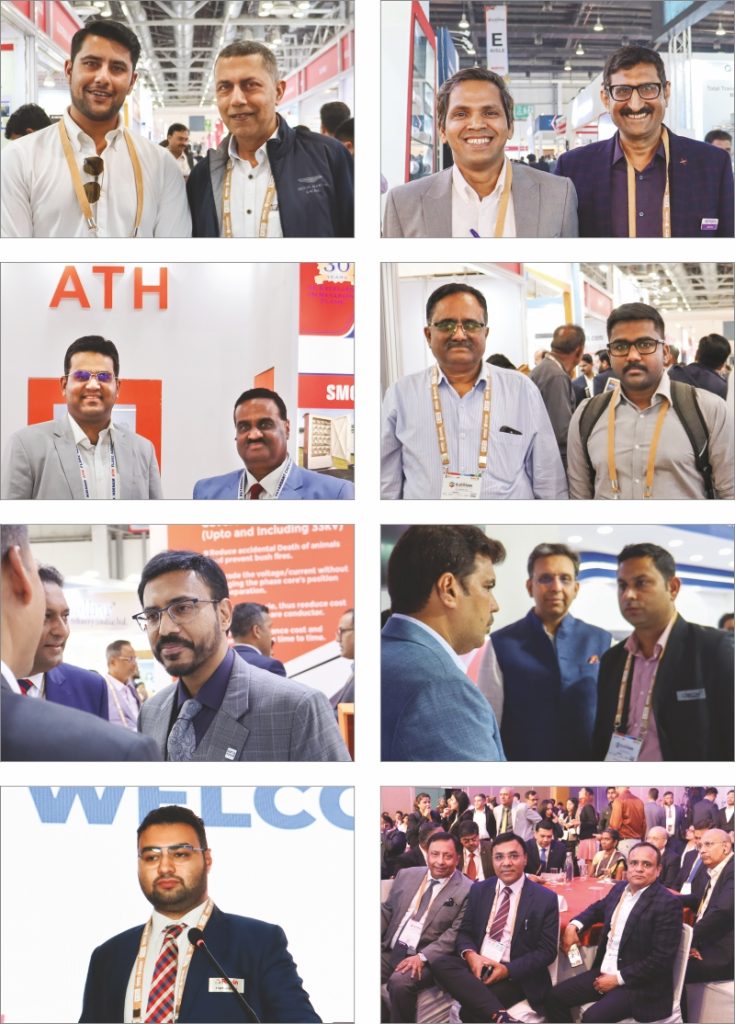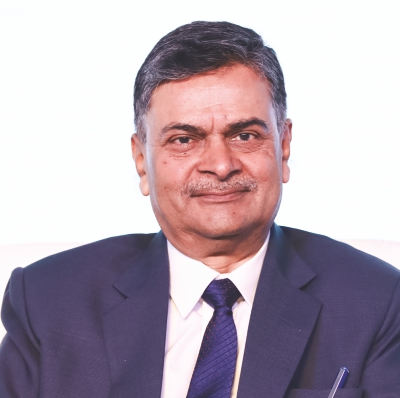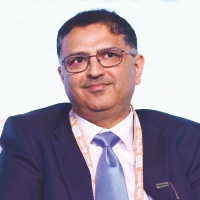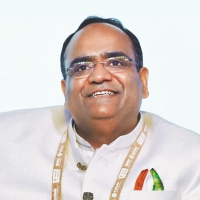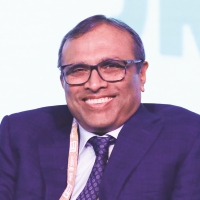Indian economy is aiming for targets that will require the support of electrical power to accelerate the pace of achievements. How can the power transmission and distribution industry contribute? We have pulled together the hints to design a clear plan for industrial players from economic achievements, trends, public announcements, and the Elecrama 2023 address of Mr. R.K. Singh, Union Minister of State for Power, New & Renewable Energy.
Indian economy is the fastest growing economy in the world at a YoY CAGR of 7 percent and is expected to remain so for the next two to four decades. A growth graph is powered by various sectors as a collective effort, and at the helm of every sector ‘power’ itself is a necessary input. There is not a single sector in any economy, developed, developing, or under-developed, that can grow and contribute to their respective economies in absence of power. Its round-the-clock applications are in fact one of the indicators of a developed and strong economy. Hence, the power industry’s role is crucial in India’s saga of transforming into a developed nation.
The country is looking forward to becoming the third largest economy in the world by 2026-27 and a developed nation with an economy size of USD 7 trillion by 2030. With its population share of 17.5 percent, India needs revolutionary changes and sectoral transformation to achieve its goals. In this scenario, the power industry has a huge responsibility to cater to, especially as the power demand of the country is growing at a YoY CAGR of 10 percent, which is higher than the economic growth rate.
Vision & Mission
The Indian power industry has grown immensely in the last nine years and has achieved several of its targets ahead of the timeline. We have transformed into a power-surplus economy with the largest single-unified power grid in the world. Since 2014, we have added 178,000 MW of capacity, approximately 42 percent of which is renewable, and 174,000 ckm of transmission lines. During this period, investments were also on the rise along with power generation, with about INR 2,50,000 crores contributing to the strengthening of power distribution systems. The investment has resulted in the setting-up of over 2500 new substations, the upgrading of over 3900 substations, 750,000 new transformers, an additional 8.5 lakh ckm of HT and LT lines, and 164,000 ckm of new agriculture feeders. India’s per-day power availability has increased from 12 hours in 2014 to 22.5 hours in 2023, and about 2.90 crore homes have been integrated into the power supply chain within a period of 19 months.
Watch: RR Kabel | Solar Cables | Solar Plant | Renewable Energy
In order to meet the country’s power demand, the Indian government has outlined the following:
- Doubling the current 410 GW capacity to 800 GW capacity by 2030.
- Increasing the share of renewable capacity to approximately 500 GW by 2030.
- Compounding 2030 capacity targets at 100 percent by 2047.
- Net Zero emissions by 2047-2050.
Power Transmission & Distribution Industry’s Contribution
Industrial growth finds motivation in government policies and support, but its achievements and figures are driven by its participants, from the largest to smallest and oldest to newest. In order to achieve its goals, the Indian power industry will have to invest over INR 244,000 crores in the existing transmission and distribution system. The opportunities are hence immense, but their application will demand patriotism from the industry’s players. They will have to prioritize quality products in huge quantities for India rather than giving in to export opportunities. While exports are important for India’s growth, a self-reliant economy has a better standing in any case, a lesson that has heightened in acoustics of the Ukrainian War and global supply-chain disruption. Moreover, India’s power consumption is going to double as well by 2030, from 1,490 billion units to 3,000 billion units.
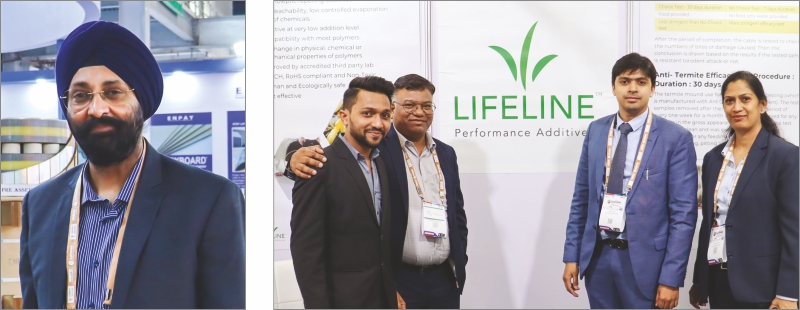
Renewable Energy & Sustainable Growth
Climate Change has remained the major discussion on various international forums and platforms. It is our duty as a society to develop in a sustainable manner so that our future generations can enjoy the fruits of our efforts, build upon them, and perform their duty of preservation for their successors. However, the global situation can be observed to have a hypocritical skew. The developed economies of the world are active participants in various international forums and discussions, and they continue to drive the guidelines of sustainable growth and transformation into renewable energies. However, they are not practicing their preachings, which seem to be aimed at curtailing and checking the growth of developing economies.
While 85 percent of the global CO2 load comes from developed countries, India’s contribution is limited to 3.4 percent. India has managed to pre-achieve its targets of increasing its renewable capacity share to 40 percent by 2030, the threshold crossed in November 2021, and is on its way to achieving its 2030 target of reduction in emissions by 33 percent, already reduced by 30 percent. Moreover, many developed economies chose to use fossil fuels to meet their power demand at lower rates once the global supply chain of natural gas got disrupted, but object to developing countries doing the same. The same is true for nuclear energy exploration as well.
Storage Capacity
Renewable energy is an important resource, however, to power an economy round-the-clock storage capacity is also required. Renewable energy sources are active in phases, and while sometimes they contribute in staggering numbers, at other times the contribution dips quite low as well. In fact, there are many states in India that have to back down on solar and wind power, because of a lack of storage capacity. The cost of storage is also very high, about four times the generational cost, that is to store 1000 MW hours of power, if the cumulative storage cost is about INR 10 per unit, generational cost share is INR 2.40 per unit only. This makes primary investment in storage capacity development non-viable and requires immense subsidy-based support from the government.
India is exploring options through PLIs which target two classes, namely lithium, and sodium. The challenge in this plan is that about 80-85 percent of lithium reserves are concentrated in a few countries, which have become hyper-conscious about supply-chain, implying despairing procedures.
India is working to upgrade its generational and storage capacity with 48,000 MW thermal; 14,000 MW hydro; 85,000 MW renewable; 70,000 MW solar; and 8,000 MW nuclear under construction. About an additional 18,000 MW of hydro will go into construction in the next year.
Hydropower is being focused on as India has benefited from it in the past, Bhakra Nangal Dam drove the early prosperity of Punjab & Haryana, and they get electricity at 0.50 per unit. Power generated by a hydro plant setup today will cost INR 4 per unit, which will remain constant for the next 25 years, which when factored along with inflation amounts to a nominal charge.
Elecrama 2023
Elecrama 2023, a flagship event organized by IEEMA for the global electrical industry, was held at India, India Expo Mart, Greater Noida. The five-day exhibition was inaugurated on February 18, 2023, and the event was graced by the presence of Mr. RK Singh, Union Minister of State Power, New & Renewable Energy; Mr. Zhemu Soda, Minister of Energy and Power Development, Zimbabwe; Mr. Satish Pai, Managing Director, Hindalco Industries; Mr. Jean Pascal Tricoire, Global CEO, Schneider Electric; Mr. Rohit Pathak, President, IEEMA; Mr. Jitendra K Agarwal, Chairman, Elecrama 2023; Mr. Hamza Arsiwala, President-Elect, IEEMA; Mr. Sunil Singhvi, Vice President, IEEMA; and Mrs. Charu Mathur, Director General, IEEMA, along with several other dignitaries.
Also Read: The Great Indian Fire Safety Challenge
Mr. R.K. Singh addressed the event with encouraging words, “India has been unshackled in the last 9 years, but a huge responsibility is on our shoulders. The Indian power industry has to contribute to India’s growth. The government will support the industry by giving you a fair playing field, transparency, investments, and direction, but you must aid India with quality, reliability, efficiency, and quantity.”
He further cemented India’s self-confidence in a global context, “We are the fastest-growing renewable energy capacity in the world, and our per capita emissions account for one-third of the global average, whereas the per capita emissions of developed countries account for four to five times of global average. The Government of India is conscious of sustainable development and preserving our resources and environment, but we will not compromise with the country’s energy requirements. If India requires the application of fossil-based energy while we are working on developing renewable energy, then we will not compromise. This is non-negotiable.”
Mr. Rohit Pathak kickstarted the event with an elated address, “We’re privileged to have the presence of the Hon’ble Power Minister and two top industry leaders at Elecrama 2023. This decade, and perhaps even this century, belongs to India. The transition to green electricity as the main source of energy has provided us with an excellent opportunity to be self-reliant and to lead the world on some of these new technologies with the scale India provides.”
Mr. Jitendra K Agarwal said, “The next five days are a culmination of the journey and findings which are lightened by our efforts, which in turn has led to such a stupendous response to this year’s Elecrama. The 15th edition of the mega event is bolstered with special concurrent events such as eTechNxt, World Utility Summit, Electraverse start-up challenge, special presence of women in power, and global CEOs in attendance. Furthermore, we’re expecting 700 buyers from 75 countries in RBSM, 15000 pre-scheduled B2B meetings, and 300 buyers from Utilities, Railways, Defence, Real Estate, Smart Cities, and large PSUs. Therefore, Elecrama 2023 is a true reflection of the capabilities and aspirations of the Indian electrical industry.“
Mr. Jean Pascal Tricoire said, “We, at Schneider Electric, consistently strive to identify future challenges and find probable solutions in our persistent bid to contribute to the electrical industry. Our vision is aligned with India’s future goals as it continues to break new ground in the power sector. I wish IEEMA good luck for what promises to be yet another dazzling Elecrama edition.”
Mr. Satish Pai, said, “At a time when global efforts are being driven to help realize our collective vision of a sustainable future, we must embrace sustainability as a way of life before expecting it to become a way of doing business. At Elecrama 2023, I am expecting exhibitors to showcase their ideas and innovations to contribute towards creating a future roadmap for a sustainable future.”

